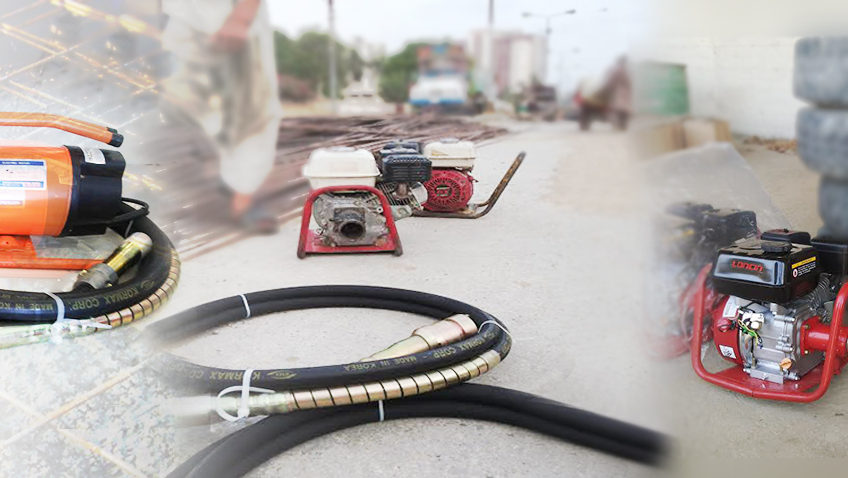Concreting is a vital part of any structural development and a predominant concern for structural engineers is to ensure adequate concrete vibration. Primarily low technical skills of poorly trained construction worker are a growing challenge that leads to failure in achieving concrete consolidation.
It is the responsibility of construction contractor to train their workers on how to properly consolidate concrete on each concrete pour. When the concrete is poured it contains excessive amount of entrapped air. Failure to remove which would result in low strength concrete and in some cases leaving visible voids in the structure.
How is concrete compacted then?
Notably the best known method for concrete compaction is through vibration produced by hand rodding. The worker gets hold of a steel rod and hits the concrete to and fro as soon as it is poured in the concrete form work. This creates the movement and vibration in the concrete and it settles down well in its form work while the entrapped air breaks apart.
But due to the nature of fast track construction, high rise buildings and typical structural engineering; construction contractors have adopted alternatives of hand rodding. Moreover construction equipment manufacturers have capitalized this by developing specialized equipment that replaces hand rodding at large. The most famous of them all is an internal vibrator popularly known as “Concrete Vibrator” “Vibrator Shaft” or “Concrete Rod”
How the concrete vibrator should be used?
Concrete vibrators should be inserted vertically into fresh concrete and kept stable in one place for some time. The vibrations caused by the concrete pendulum shaft would segregate excessive air and water from the cement and aggregates thus consolidating it better.
Some Precautions For Better Concrete Vibrator Usage:
1. The concrete vibration should be done in steps like the concreting is done in layers. Every time a layer of concrete is poured, only that should be processed by a concrete vibrator. Later when the next layer of concrete is poured, the vibration should be done on that latest layer as the previous layer was already compacted.
2. The vibrator should be inserted in concrete for at least 5 to 15 seconds before being removed slowly. This amount of time will adequately vibrate most concrete.
3. The entire hose pipe should not be dipped in the concrete because the vibrating element is in the head of the mechanical vibrator which is vulnerable to choke if such care is not imparted.
4. Correct head size should be opted based on the steel reinforcement and form work dimensions. For example, using a 25mm head size in a heavy duty raft foundation would lead put extra pressure on the unit and cause breakage.
5. Proper cleaning should be done with water so there are no concrete elements on the head or hose pipe of the concrete vibrator.


Write a Comment